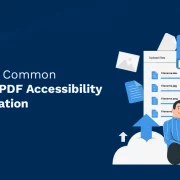
How to Make Online Classes More Interactive?
Despite the adoption of online education worldwide, some believe that this mode of learning can hardly compensate for physical classroom learning. Some educators believe that the online mode of education is inherently flawed and lacks some crucial elements of quality education.
Many students tend to neglect their education simply because they cannot focus on the class, primarily due to an erratic network connection and lack of patience. They cannot wholly be blamed as this happens only because they are struggling to put up with the new normal, not because they don’t care. On the contrary, 70% of students say online learning is better than traditional classroom learning.
The good news is that there are plenty of strategies to make online classes engaging and exciting for both students and teachers. Here are the five best tips on how you can make online classes more interactive.
Table of Contents:
- Why Educational Institutions Should Make Online Courses More Interactive?
- How to Make Online Courses More Interactive – The Top 5 Ways
- Making Online Learning Interactive Using Key Elements
- Conclusion
Why Educational Institutions Should Make Online Courses More Interactive?
Let us understand why focusing on better interactivity in eLearning is essential:
- Improve Student Engagement: Want to know how to make online sessions interactive? The answer lies in staying engaged in increasing the involvement of students. Elements like live polls, quizzes, and breakout rooms keep learners actively involved, focused, and motivated throughout the session.
- Better Retention of Learning: Interactive learning tends to lead to better retention than passive learning methods. Simulations and role-playing engage students in real-life scenarios to maximize retention and understanding.
- Encourage Interpersonal Communication: If you are looking for strategies to make an online class interactive, you should encourage collaboration. Online learning can be very isolating at times, so its ability to bridge interpersonal contacts could bring completion and fulfillment to it.
- Personalize the Learning Experience: The only way to succeed in making online learning interactive is through personalization. Interactive courses can adjust according to each learning style and pace, offering personalized resources and feedback. Adaptive learning technologies can track student progress and provide custom recommendations.
- Leverage Innovative Technologies: Are you wondering how to make an online class interactive with technology? Advanced tools like augmented reality (AR), virtual reality (VR), and AI-driven chatbots can transform traditional eLearning into immersive, hands-on experiences.
Also Read: 10 Best Strategies for Successful Implementation of Online Assessment Tools in Universities
How to Make Online Courses More Interactive – The Top 5 Ways
Here are the top 5 recommendations that will help you learn how to make eLearning more interactive!
1. Offer Flexibility in Learning
A foolproof way to make online classes more interactive is by introducing students to online platforms that let them access the course materials any time they want. Gone are the days when students did not get class materials or resources shared by teachers when they skipped or missed classes. Presently, they can enter a platform by entering their login ID and password and study any time they want. Hence, to make online classes more interactive, you must acknowledge that learning has now become more flexible than it has ever been.
Thanks to technology, learning has also become more immersive. Allow your students to imbibe technology and learning platforms to help them reach the next level organically. Online learning enables the holistic development of learners by incorporating the best practices of modern-day teaching and learning. It allows both educational institutions and students to develop their skills holistically and solve challenging exercises to learn better. Online learning makes delivering interactive lessons to higher education students easy.
2. Leverage Storytelling
Storytelling is a primitive art of attracting people. Besides making a lesson more attractive and simplifying the trainer’s task, storytelling also offers several benefits. Hence, to make online classes more interactive, you must deliver more stories than lectures. Storytelling provides the following significant benefits:
- Instills Values: Since stories often involve humans or animals, they serve as a life lesson for learners. Let your students involve themselves in the story and pick essential life skills like kindness, compassion, humility, etc. Once they find something reasonable, they will naturally involve themselves more in the class.
- Improves Listening: Online classes can sometimes be very boring. This can prompt learners to lose their attention. Storytelling can bring their attention back to the class and thus improve their listening skills.
- Aids Retention: In offline classes, body language plays a significant role in making the learners understand the topic of discussion. However, in online classes, the scope of comprehending body language is very limited. In fact, it appears robotic at times. Storytelling can help you break the monotony by allowing the learners to immerse themselves in the story and remember the things discussed in the class better.
You can use technology to improve the way you deliver content. Create a story with animation, video, and audio, and allow your students to soak themselves in the experience and better understand the content. Interactive video learning is a proven way to enhance student engagement.
3. Check Students’ Progress More Often than in Offline Classes
Just like you conduct short tests in a physical classroom to check how much the students have learned, you should regularly do the same in an online classroom. You can conduct tests from topics that have been covered so far or ask the students some challenging questions to see how they perform.
Another excellent way to engage students is to conduct online polls and quizzes and reward them for winning. You can conduct polls to check your student’s level of understanding of a particular topic. The main motive behind this is to ensure that no student is left behind.
Modern-day technology lets you create quizzes and polls like a pro. You can also set the time when you want the tests to go live. Some platforms calculate the score all by themselves and generate a report for your reference. All of these can save you precious time and help make your online classes more interactive.
4. Gamify Learning
Learners grasp concepts best when they become active participants in the learning experience. This is why incorporating interactive activities in your teaching session is a great way to make your students learn a topic quicker and make them enjoy the learning process.
74% of teachers have used digital game-based learning to enhance their lessons. Make some room for challenging puzzles, strategic thought-provoking games, problem-solving activities, situational judgment scenarios, etc., to help them sharpen their problem-solving abilities and decision-making capabilities and to be more innovative and collaborative.
Also, encourage them to design PowerPoint presentations or a project on the topic you are teaching. This will make the students do more research on the topic, resulting in them understanding the subject even better. Conducting fun quizzes is a great way to ensure whether the students are constantly revising or not.
Rewarding students for their hard work keeps them motivated to do better. This will keep the learners on their toes and also drive a friendly competition between them. Digital learning helps you create a gamified online classroom to make learning seamless and impactful.
5. Scenario-Based Learning Is the Latest Trend
Scenario-based learning is the latest trend in the field of adult learning. Scenario-based learning means showing specific applications from the context of a role. For instance, you may ask one learner to play the role of a doctor while another plays the role of a medical representative. The trainer’s task will be to guide both learners in the threaded scenario and provide feedback at every step.
Scenario-based learning is best suited when you want to enable the learner to simulate and experience real-life scenarios. Once the learners involve themselves in the activities, you don’t have to think of how to make eLearning more interactive. Use the latest technology to introduce scenario-based learning through carefully crafted content and deploy them to attract your students toward their classes.
Making Online Learning Interactive Using Key Elements
If you’re creating an interactive online class or enhancing courses, follow these tips to ensure that students are connected and motivated:
1. Use Real-Time Polls and Quizzes
Interactive tools such as polls or quizzes are perfect for increasing students’ engagement. They are meant to encourage participation and instant feedback, so when interacting online, the students are kept attentive and well-occupied.
2. Use Breakout Rooms
Breakout rooms are a game-changer if you’re considering how to have them make online sessions interactive. These smaller virtual groups would allow students to team up to work on tasks, discuss ideas, or complete activities, thereby simulating in-class group work where teamwork and understanding are created.
3. Game the Learning Experience
Making online learning interactive is easier with gamification. Use aspects like badges, leaderboards, and rewards to encourage students. That makes a wholesome learning environment by tapping into the competitive spirit.
4. Encourage Peer-to-Peer Learning
Worried about how to make an online class interactive for students? Peer-to-peer learning is the way to go. Incorporate activities such as group discussions, peer reviews, and collaborative projects to promote knowledge sharing among the learners and help them build a community.
5. Use Multimedia Content
Vivid visuals and riveting audio can make all the difference in a session. Use videos, animations, and infographics to make content more interactive. The use of multimedia content not only answers the question of how to make eLearning more interactive but also makes concepts easier to grasp.
6. Use Adaptive Learning Methods
65% of K12 teachers are using digital learning tools to teach students and 25% of educators notice improved learning outcomes. Personalization is at the heart of how to make online courses interactive. Adaptive learning systems alter content about the learner’s pace and understanding. This way, it develops a unique learning experience for them and keeps them engaged.
Also Read: The Importance of Collaboration in Large-Scale Assessment Development
Conclusion
Online classes might seem a little overwhelming at times, but they are the way to go for the foreseeable future. Active participation of both students and teachers is important to make online classes more interactive and productive. So, make sure to follow these tips to make your student’s time in online classes enjoyable. Don’t forget to ask for feedback from the students. It’ll help you conduct better online classes in the future.
Partner with Hurix Digital for the best interactive learning solutions. Learn how to make online courses more interactive by collaborating with our experts, who can help you engage learners to produce impactful results.
Our team can help you make your online classes more engaging with efficient learning solutions.

Senior Vice President – Business Development
Over 25 years of experience in the edtech and workforce learning industry with strong skills in Business Development, Customer Relationship Management (CRM) and Strategy.



